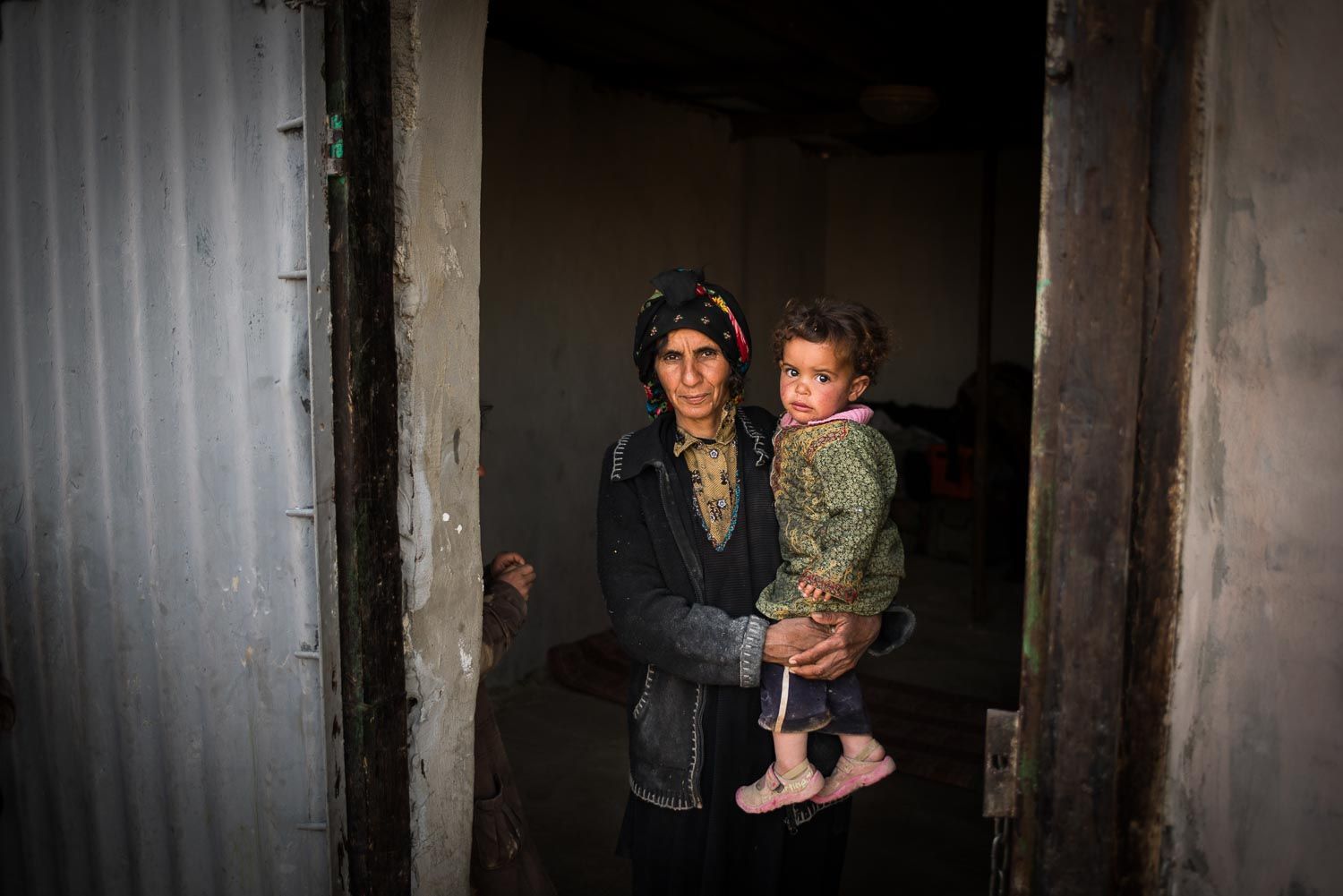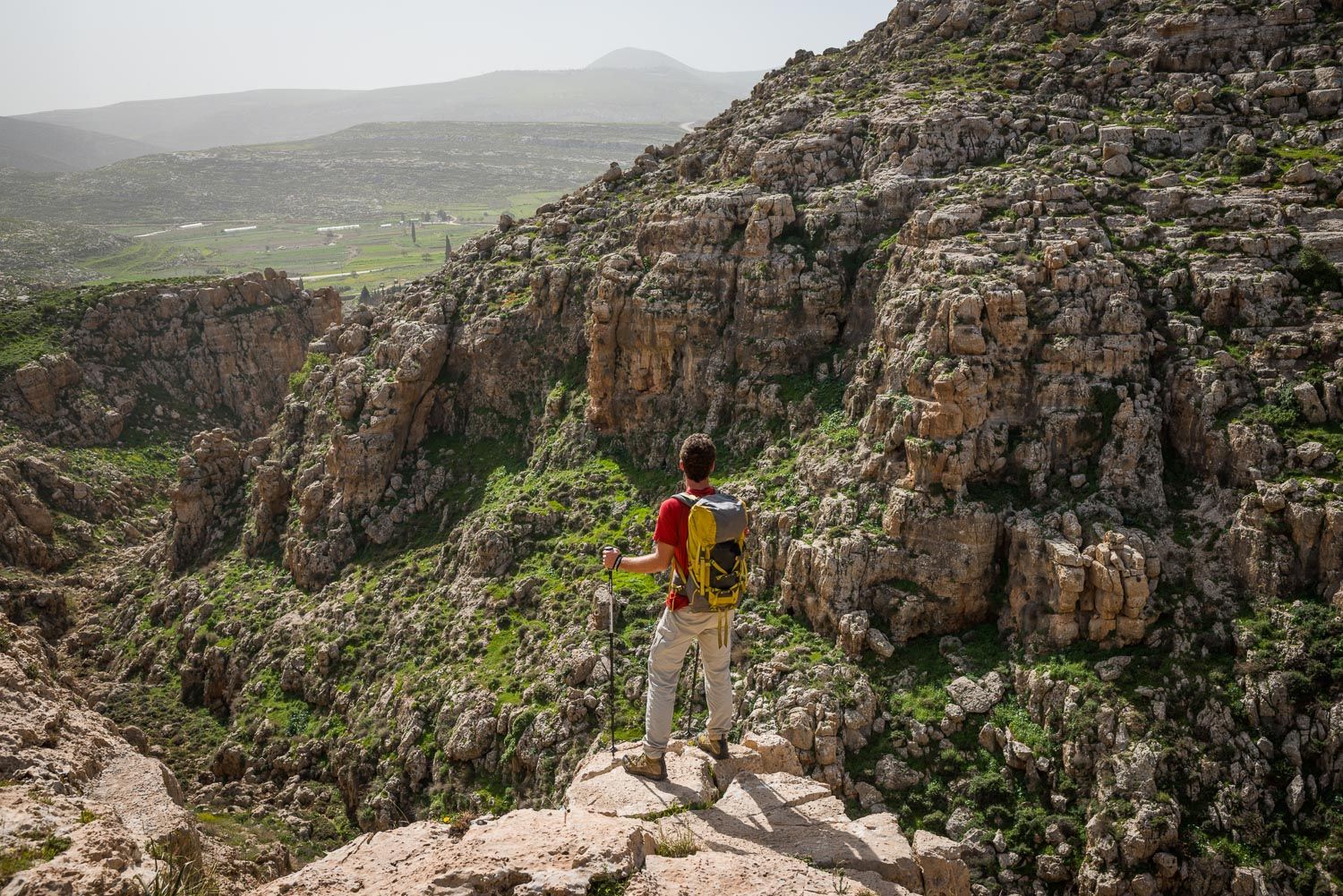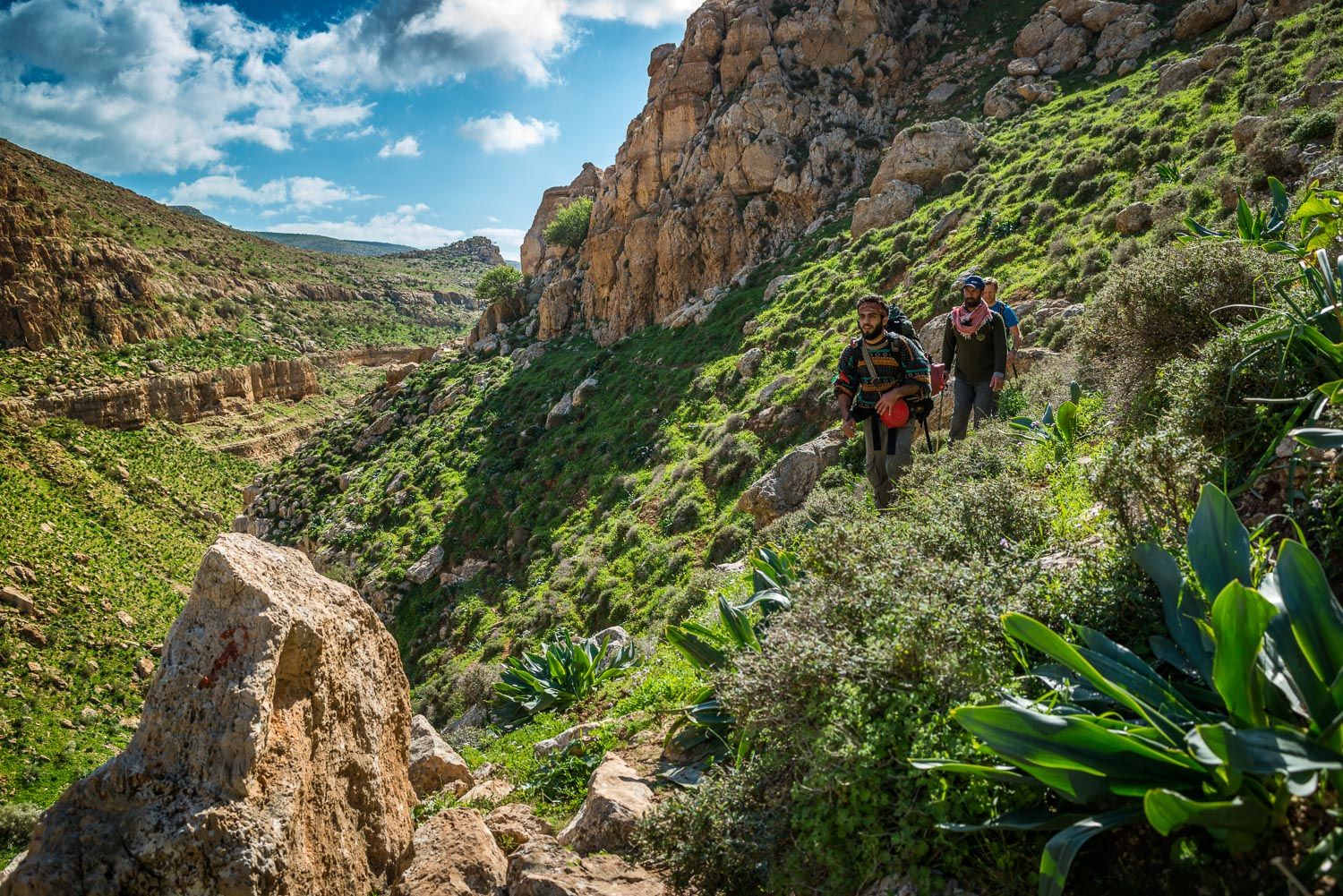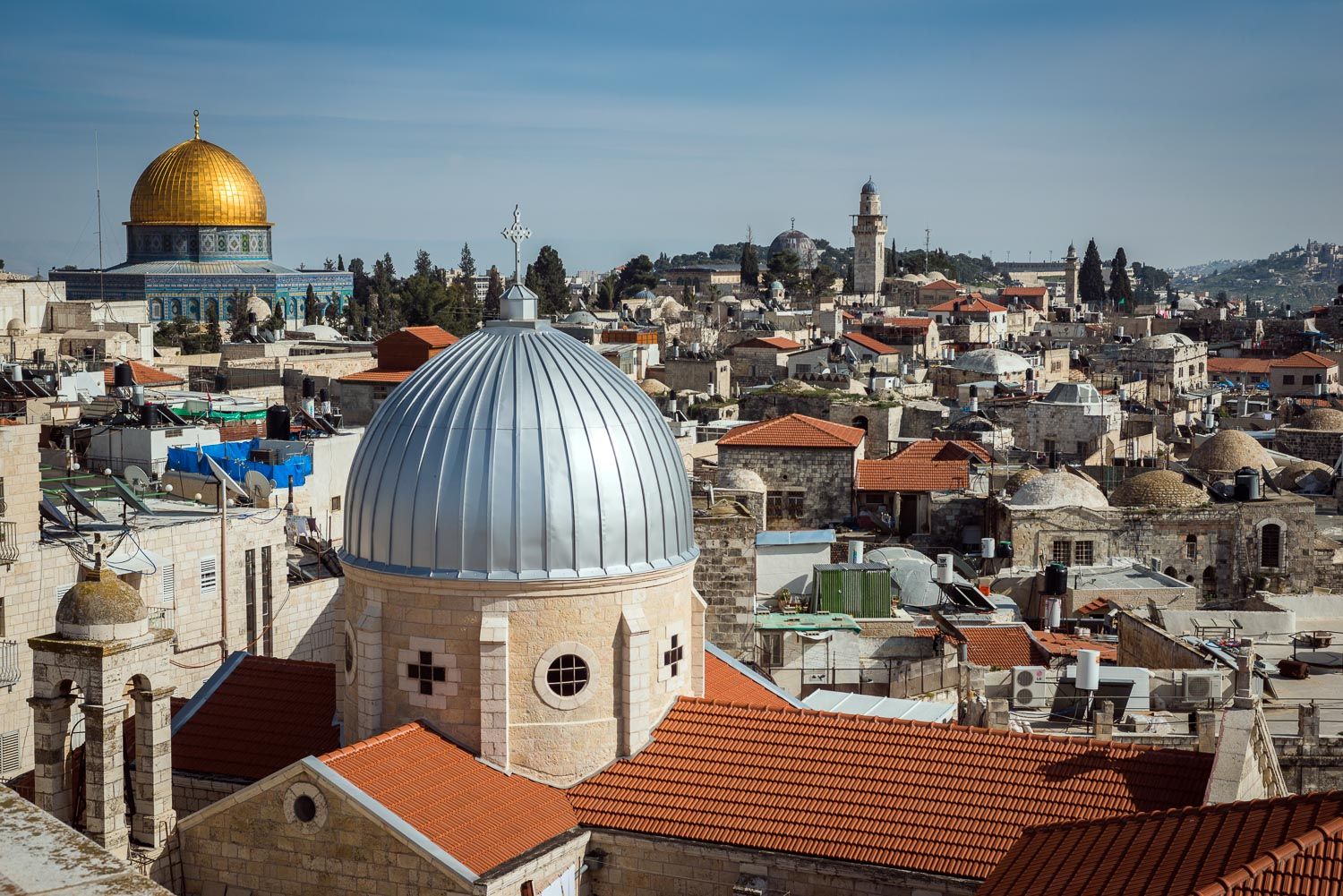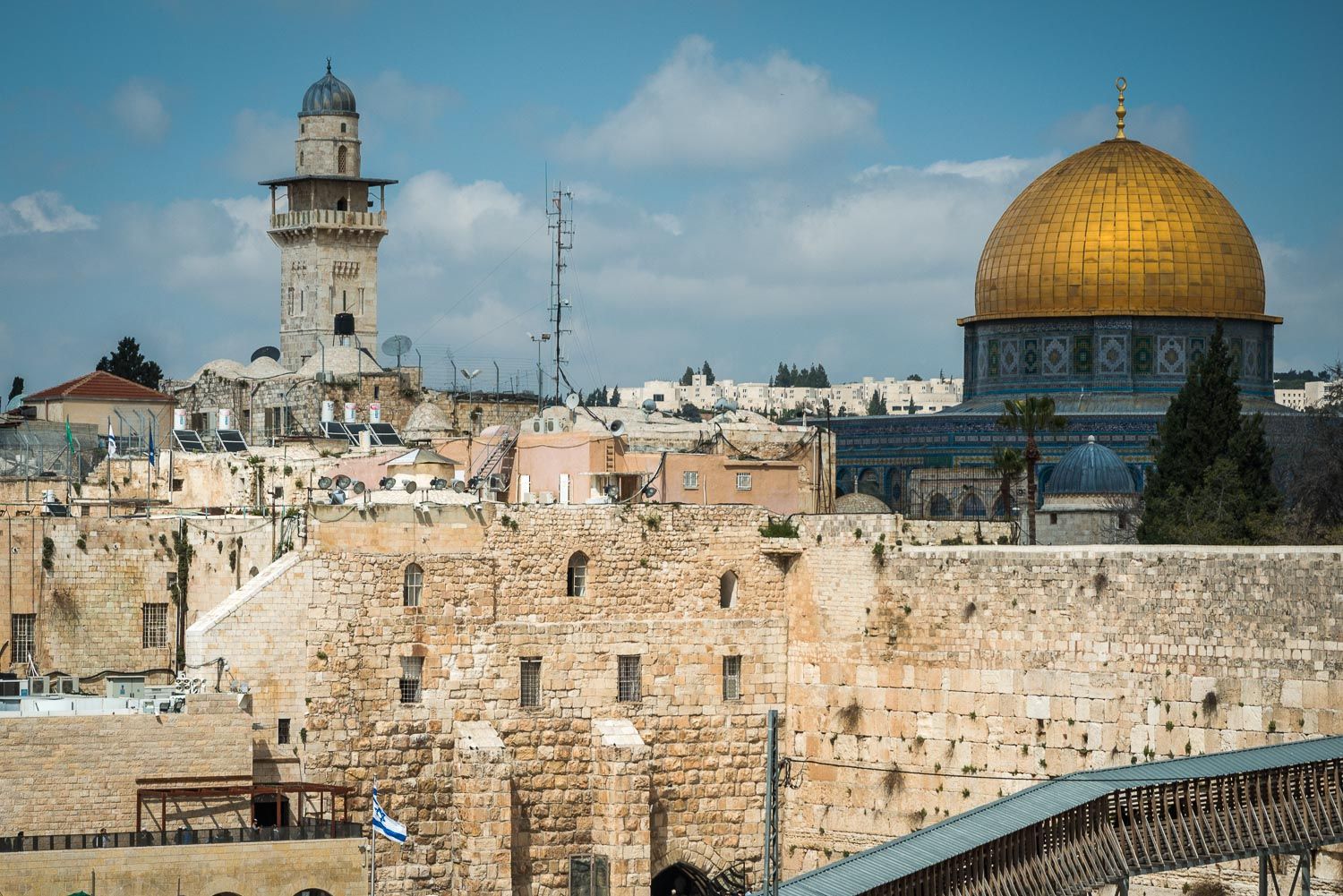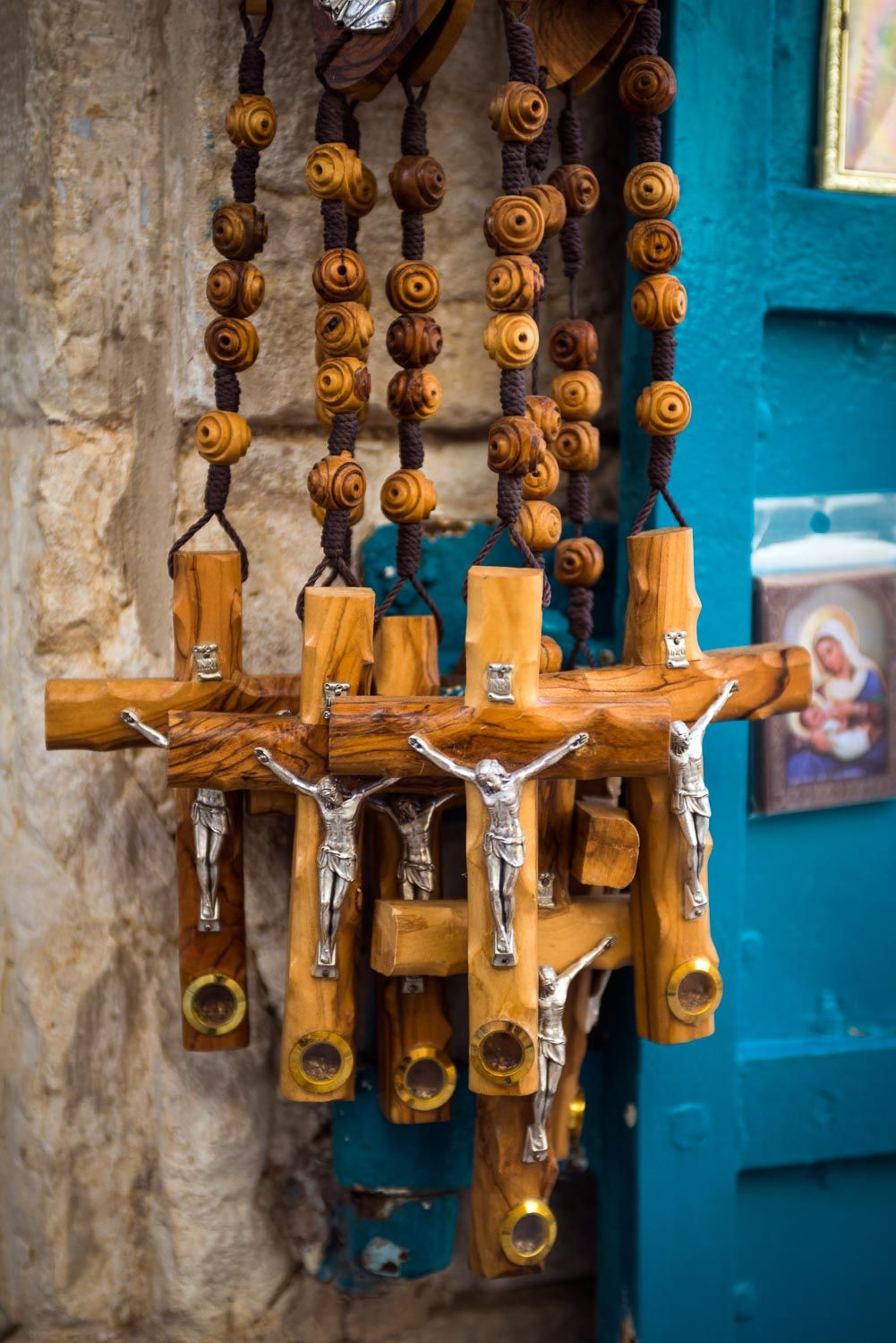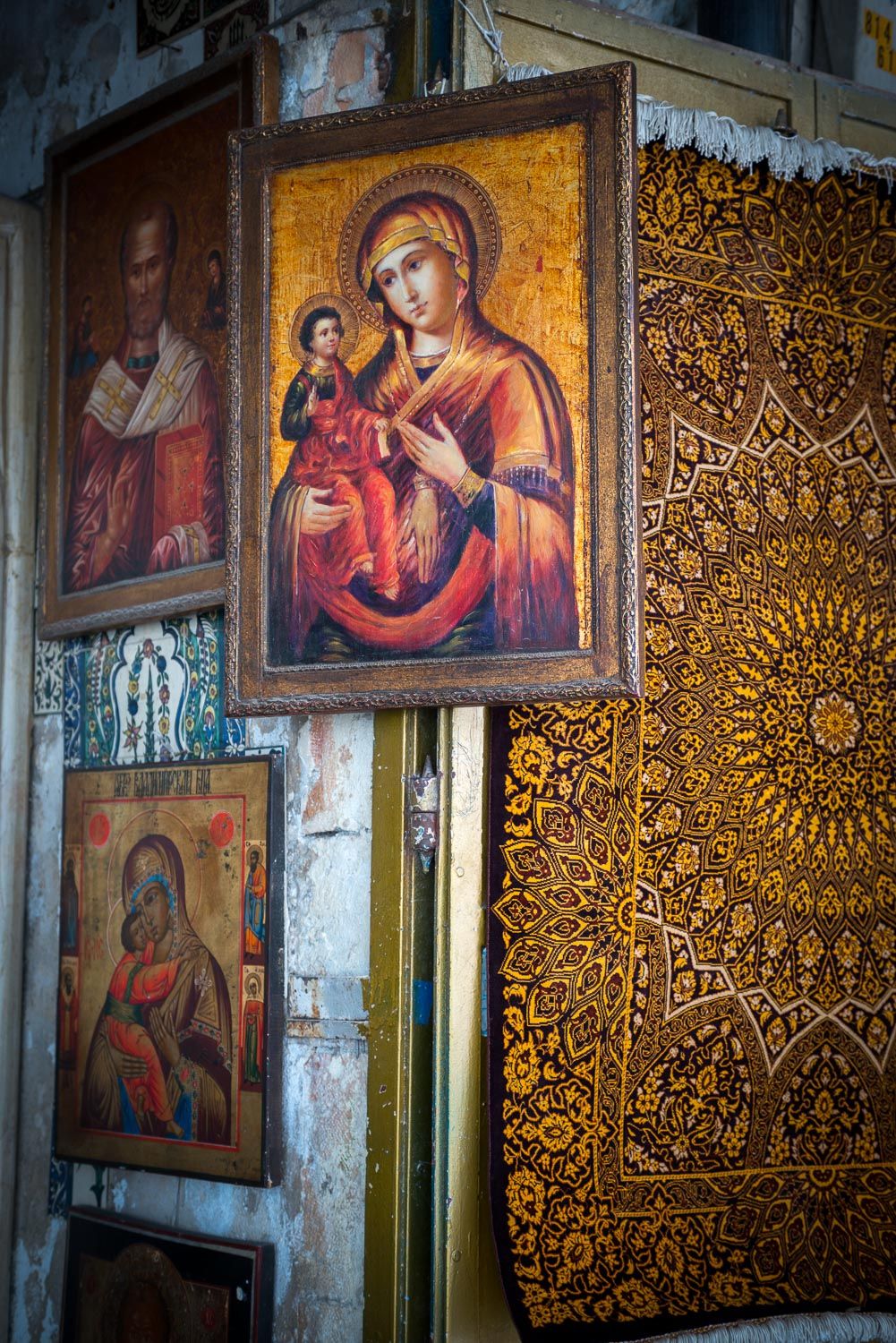Postcards from Palestine
Exploring the West Bank
Majestic sunrises, steep canyons and delicious falafel. Monasteries anchored in time, exquisite cheese pastries and Bedouin camps. Vibrant markets, swaths of olive trees and the best beer in the Middle East. Palestine is a land of treasures and unexpected surprises.
Join us on this journey through an area of the world off the radar of mass tourism, holding many more treasures than you can imagine. These are my postcards from Palestine, expressions of some of the many reasons why I am in love with the country.
THE DEAD SEA
Will it be worth it? It’s 3:30 in the morning as we arrive in the Bedouin camp of Arab ar Reshayda in complete darkness. Our guide Isnaid lives in a hut with his wife, mother, sister and three small children. The walls are made of stone and the roof of plywood. Inside, a Koran rests on a shelf next to a bottle of lye and a doll. Outside is a camel, a dog and several goats. We sip tea together under an impressive starry sky. The darkness of the desert allows us to distinguish every little speck of the Milky Way flooding the sky. Only the lights of the sleeping cities of Hebron and Jerusalem flicker on the horizon, and those of Jordan in the distance.
At dawn, after a tortuous journey along a rocky road on which we spot an Israeli military training camp, we reach the edge of a cliff from which we can see the coast of the Dead Sea, presenting like a piece of art by the erosion of the salt, furrowed by the road that winds around it. “It can be done on foot in two and a half hours, but at night it’s cold and many clients give up before they get there,” Isnaid tells us.
The day breaks, and the expanding palette of pink, purple, and orange colors in the sky answer my question: yes, it was worth it.

SEBASTIA
“They are taking you to places that no one sees,” says Hafez Kayed, owner of the Holy Land restaurant in the village of Sebastia. Nestled in the middle of the mountains of Samaria, Sebastia is famous for its many Roman ruins and the church dedicated to St. John the Baptist. Despite the draw, Hafez tells us that, “99% of the tourist programs do not pass through here. They say that it is not safe, but the truth is that this is safer than Tel Aviv.”
We spend the night at the Al Kayed Palace Hostel, one of the three guesthouses in the center of town. We wake to a delicious meal of shakshouka for breakfast, surrounded by United Nations posters detailing mobility restrictions in the West Bank: walls, barriers, fences, checkpoints, observation towers, tunnels and trenches. “We see tourism not just as an economic engine, but as a window for Palestinians to show their identity and culture,” says George S. Rishmawi, a tourism promoter who is with us. “I’m sure that in the news from your country, the image conveyed of the West Bank is as a dangerous place, but thanks to this trip you are seeing firsthand that it is not.”
Arabic music resounds in the valley and storks fly overhead as we walk among thistles on our way to the ruins of a small Byzantine church on the outskirts of Sebastia. Except for the minarets and wheat fields, the landscape of hills and olive groves remind me of southern Spain. On a hilltop I can make out a walled town of terraced houses with peaks that appear to be watchtowers. “A prison?” I ask naively. “It’s a settler’s settlement,” George tells me. “They are like prisons, but we are the prisoners outside them.”

WADI AUJA
We will spend the night in Taybeh, considered the last completely Christian town in the West Bank, famous for giving its name to what is considered the best beer in the Middle East. Before our departure we visit the Church of St. George, where—among the ruined walls, remains of open fires, and altars—we are surprised to see recent traces of bloody palms on the wall, as well as the bloody remains of animal sacrifices. We progress through a landscape of rolling hills, settlers, and Bedouin camps. A deer crosses the biblical landscape under a sky moving with clouds and the whisper of a cool breeze. Perfect diagonal traces of rocks and bushes mark the surroundings of a peaceful path. The shade of three Ziziphus jujuba—the trees from which the Jews made the crown of thorns for Jesus on the day of his crucifixion—provides us with a sweet resting place after a few kilometers. Their fruits, although edible, do not tempt my palate.
“In winter some Bedouin families live in the large caves, while the small ones are home to hyenas, foxes and wolves”
The walk is beautiful. We progressively head for Wadi Auja among lavender bushes, leaving our footprints behind in the thick mud of the road. “The water only runs here four or five times a year,” explains Nasser Kaabneh, our local guide for the day. Signs on the rocks offer escape routes in the event of occasional flooding, while the side walls rise higher and more haughty and threatening. “In winter some Bedouin families live in the large caves, while the small ones are home to hyenas, foxes and wolves,” says Nasser, who also tells us it is possible to find wild honey on the steep walls, which can cost upwards of 150 euro a kilo! After five hours of intense walking we arrive at the Bedouin camp in Auja, at the foot of a water spring. Which makes sense, since the Bedouins have no access to running water.

JERUSALEM
“We are going to guide you on a tour through the realities of Jerusalem,” George tells us as we walk on the east side of Jerusalem, just fifty meters from the militarized zone that divides the city in two. “Like Berlin not so long ago,” he says with a laugh. Jerusalem is a city with overlapping layers of civilizations and religions throughout history. The famous Damascus Gate gives way to the sensory overcrowding of the Muslim Quarter, in which signs of other religions such as Armenian churches or Catholic hospices are nevertheless embedded. “We Palestinians are a mixture of cultures. That’s why we’re so smart, and that’s why we’re so fragmented,” George says. Christians, Armenians, Greeks… different ethnicities and creeds live together in each neighborhood. Yet what worries me is the presence of armed soldiers and surveillance cameras every few meters. Even so, we visit sacred places such as the Al-Aqsa Mosque, the Wailing Wall, or the Church of the Holy Sepulchre among the hordes of tourists. George declares that, “This city is as much yours as it is ours.”
“We Palestinians are a mixture of cultures. That’s why we’re so smart, and that’s why we’re so fragmented”

FOOD CONNECTS US
Gastronomy is one of the most important parts of the travel experience. New flavors connect us with other forms of life. They enrich not only our taste buds, but also our knowledge and understanding of cultures different than our own.
Olives and olive oil, sultanas, cheeses, apples, figs, dates, rice, lamb…Palestinian cuisine is a product of the different cultures and civilizations that have settled in its geography throughout history, going back to Ottoman, Persian, and especially Arab influence. The result is similar to other Levantine cuisines such as Syrian, Lebanese, or Jordanian. In other words, it’s delicious.
“When we started fourteen years ago, they told us ‘You are crazy, who would want to come to Palestine to trek or ride a bike?”
I will never forget the first time I had shakshouka for breakfast, a tasty sauté of stewed tomatoes, spices, and eggs. And the most beautiful thing is that when I occasionally prepare it at home it evokes the views of Samaria from the first time I tasted it. Or the pomegranate juice I tasted on the streets of Jerusalem. Or the most delicious falafels in the world in a small shop in Bethlehem. Or the knafi, the Palestinian sweet par excellence: a cheesecake soaked in sugar syrup and rose water that I first tried in the street market of Nablus, a taste that I still seem to savor today as I write about it. Or the maqluba with which we were received in Sebastia: a dish cooked with the meat at the bottom of a large pot, to which layers of fried vegetables like potatoes, carrots, cauliflower and eggplant are added, then the rice near the end. When served, it is turned upside down with the meat on top, a move that gives the dish its name: maqluba means “upside down” in Arabic.
In the evening, a family from Kufr Malek village will share a delicious typical oozie dish with us: rice with chopped vegetables and roast meat, seasoned with parsley and chopped pine nuts. The dinner is also an opportunity to share a chat with members of the local community. I sit down with Michel Awad, one of the founding partners of the Siraj tourism development agency who says, “When we started fourteen years ago, they told us ‘You are crazy, who would want to come to Palestine to trek or ride a bike?’ All tourism was biblical, and no other possibility was considered. Now they no longer see us as crazy: ten years ago we handled a hundred clients a year, and now there are more than a thousand.”

AHLAN WA SAHLAN
I have already enjoyed exquisite local delicacies, and have had the opportunity to visit villages, monuments, and surprising natural spaces. But my surprises did not end here. They continued with the people who shared their stories and dreams with me, and their famous Palestinian hospitality. A great gift of meeting people is the way it serves to break stereotypes.
Would you imagine that in Palestine you could meet a woman who runs a brand of beer that is exported to a dozen countries around the world? I did not. And that is why the talk with Madees N. Khoury in Taybeh Beer’s own brewery surprised me so much. “It costs us three times more time and three times more money to move our product from the factory to the port than from the port to Europe,” she told me about the challenges in running her business.
“Our motherland is the desert, it is our homeland”
Or guides like Nasser Kaabneh, a Bedouin who works as an English teacher in a school, but is also a certified trekking guide with four years of experience. Or Anwar Dawabshe, who with all his experience dreams of going to some of the countries that other guides invite him to. Or Sharaf, Ghayth, Khalid Hamad, and Mohammad, the young members of the Sebastia Romains Group, who—still sweating after the demonstration of traditional dances—tell me with a smile that for them “It is very important and nice to show our dances to the people who visit us, plus it helps us practice our English by talking with people from all over the world.”
A 4X4 takes us through the heartbreaking landscape of rocks and desert sand under groups of clouds that form islands of light on the fluctuating hills of extreme aridity. “Our motherland is the desert, it is our homeland,” our Bedouin guide Jameel Hamadine tells me. Large drops of rain bring a certain surrealism to the scene, a kingdom of solitude and silence through which Ezekiel and Abraham made the mythical “crossing of the desert” in search of Mount Zion. “We would love to ride a Bedouin Trail, but for that we would first have to get freedom of movement,” he tells me with a dejected gesture. “Nobody knows our culture or our way of life. But now, thanks to tourism, many of us have learned English and become guides. And we are very happy to welcome people from other countries and to make them happy.”
Things to see & do in the Holy Land







Palestine: much more than you can imagine
Prepare your trip to the Holy Land
In a world that seems to have gone mad, it is healthy to see that there are still places where the concept of hospitality is more than just a service or a product to be monetised. Return to the roots of the purest tourism in Palestine.
I


